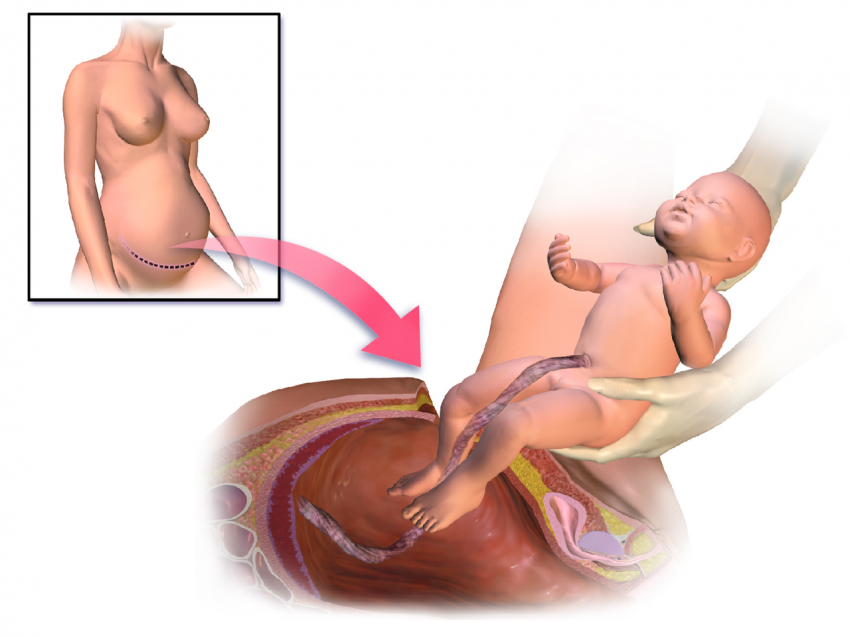Introduction:
Caesarean section, commonly known as C-section, has become one of the most frequently performed surgical procedures worldwide. Over the past few decades, the global rate of C-sections has surged dramatically, raising questions and concerns among healthcare professionals, policymakers, and expecting mothers. According to
Why are Caesarean rates increasing?

the World Health Organization (WHO), the ideal rate for C-sections should be between 10-15%, yet many countries exceed this baseline significantly. This article explores the key factors contributing to the rising rates of Caesarean deliveries across the globe, examining both medical and non-medical reasons.
1. Medical Advancements and Increased Safety
One of the primary reasons for the rise in C-section rates is the significant improvement in medical technology and surgical techniques. Modern advancements have made
C-sections safer and less risky than in the past. With better anesthesia, surgical equipment, and infection control methods, many obstetricians opt for a C-section when there are potential risks in a vaginal delivery. While this has certainly reduced maternal and neonatal mortality rates in high-risk pregnancies, it has also contributed to a higher overall rate of C-sections.
2. Rising Maternal Age
The age at which women are having children has steadily increased, particularly in developed countries. Older maternal age is associated with higher risks during childbirth, such as gestational diabetes, preeclampsia, and other complications that may necessitate a C-section. Additionally, advanced maternal age is often linked with decreased fertility, leading to an increase in assisted reproductive technologies (ART) like IVF, which is associated with a higher likelihood of multiple pregnancies. Multiple pregnancies, in turn, often lead to more planned C-sections to reduce the risks associated with natural delivery.
3. Changing Perceptions and Patient Preferences
There is a growing trend among expectant mothers to prefer C-sections over vaginal deliveries for reasons such as convenience, fear of labor pain, or scheduling flexibility. The perception of C-sections as being less traumatic and more controlled is influencing more women to choose this option. This trend is more evident in urban and developed regions, where awareness of different delivery methods is higher, and access to healthcare facilities is more readily available. Additionally, in some cultures, a C-section is viewed as a status symbol, adding to the increase in elective C-sections.
4. Fear of Legal Liability Among Healthcare Providers
Healthcare professionals, particularly obstetricians, may opt for a C-section to alleviate potential legal liabilities. In an environment where lawsuit is common, the fear of being sued for complications during vaginal delivery can drive doctors to recommend
C-sections even when it might not be strictly necessary. Defensive medicine practices, where doctors take extra precautions to avoid lawsuits, contribute to the rising rates of C-sections.
5. Economic and Institutional Factors
In many healthcare systems, economic incentives play a pivotal role in decision-making. C-sections are often more expensive than vaginal births, potentially leading some private hospitals and medical practitioners to prefer them due to higher reimbursement rates. Moreover, in countries with private healthcare systems, where hospitals are businesses, there can be financial motivations to perform more C-sections. Institutional policies and practices, such as understaffing or inadequate training in vaginal delivery techniques, can also lead to a higher proportion of C-sections.
6. Obesity Epidemic and Related Health Issues
The global increase in obesity rates has also contributed to the rise in C-sections. Obesity is associated with a range of complications during pregnancy and childbirth, such as gestational diabetes, hypertension, and labor dystocia, which often necessitate a surgical delivery. Moreover, overweight or obese women may face longer labor times and a higher risk of emergency C-sections, contributing to the overall increase in
C-section rates.
7. Technological Interventions During Labor
Increased use of technological interventions, such as electronic fetal monitoring (EFM), has impacted C-section rates. While EFM is intended to monitor fetal distress, it has a high false-positive rate, leading to unnecessary interventions, including C-sections. The overuse of other interventions, like labor induction and epidurals, can also disrupt the
natural course of labor, potentially increasing the likelihood of a C-section.
8. Limited Access to Midwifery Care
Countries with lower C-section rates often have integrated systems where midwives play a significant role in managing low-risk pregnancies and deliveries. However, in many parts of the world, particularly in urban areas, obstetricians predominantly handle deliveries, and midwifery care is less accessible or underutilized. Midwives generally support natural birth practices and are trained to manage vaginal deliveries, potentially reducing the need for surgical interventions.
9. Cultural and Societal Factors
Cultural norms and societal expectations also play a role in increasing C-section rates. In some cultures, there is a preference for delivering a baby on a specific date, which may lead to planned C-sections. Additionally, societal pressures and expectations about the perceived risks of natural birth or the desire for a particular delivery experience can drive more women to choose C-sections.
10. Impact of the COVID-19 Pandemic
The COVID-19 pandemic has further impacted delivery methods worldwide. Concerns about virus transmission, hospital policies, and staff shortages have led to an increase in C-section rates in many regions. Hospitals have often opted for scheduled C-sections to manage patient flow and minimize the risk of virus exposure, particularly in the early stages of the pandemic.
Conclusion:
The increasing rates of Caesarean sections worldwide are driven by a complex interplay of medical, economic, social, and cultural factors. While C-sections can be life-saving in specific situations, the upward trend raises concerns about their overuse and the
potential risks involved. To address this issue, there is a need for a balanced approach that prioritizes the health and well-being of both mothers and babies. Encouraging informed decision-making, enhancing midwifery care, promoting natural childbirth practices, and addressing underlying health conditions can help manage and potentially reduce the rising rates of Caesarean deliveries globally.







